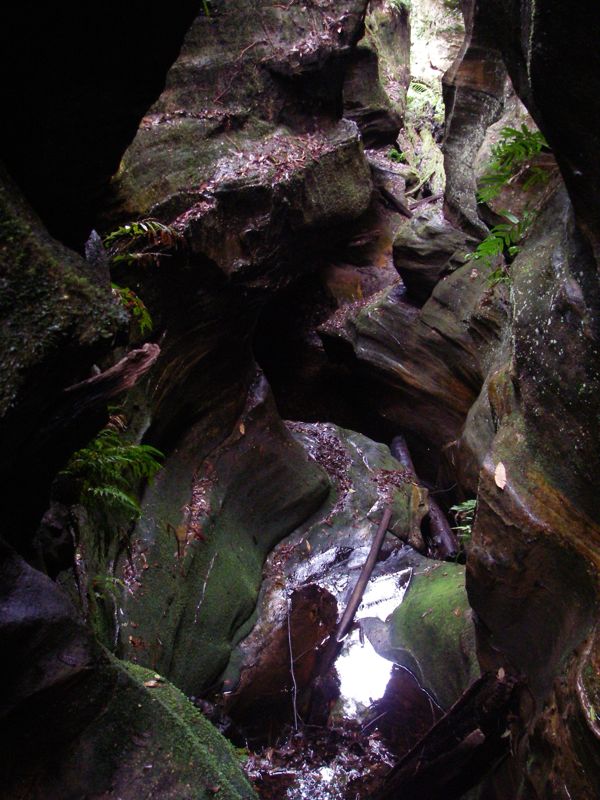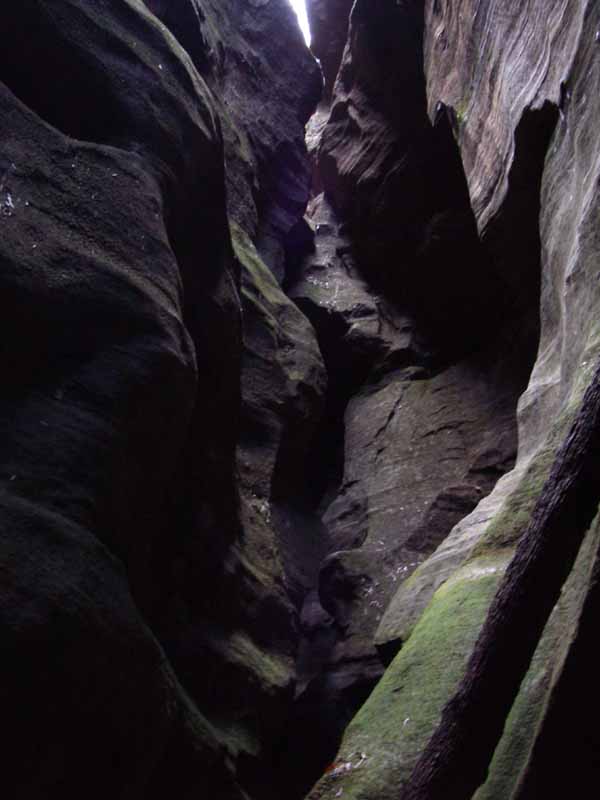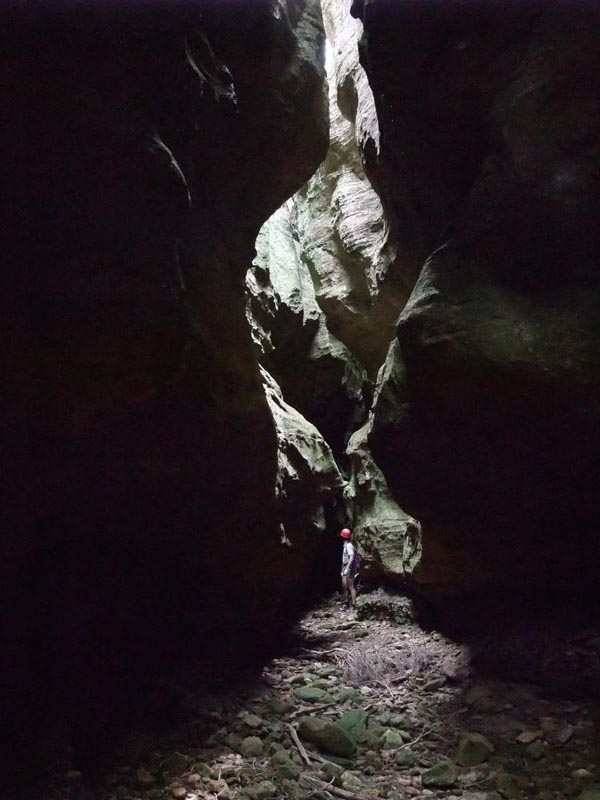

This is one of the largest canyoning areas - It includes the tributaries of Ovens and Coorongooba Creeks (as well as some other creeks). It is unusual for a canyon in this area to have many swims - they tend to be drier than the canyons to the south.
The area contains a wide number and a wide diversity of canyons.
Some are narrow and
almost horizontal. Some are very narrow and are hard to fit through.
Some are quite technical with lots of abseils and an interesting
choice of belay points. It is well worth a visit. Perhaps the best
way to visit this area is part of a longer walk - say a 5 day trip
from Glen Davis or from the start of the Gospers Road. Hopefully
soon, the Gospers Road will be fully closed and allowed to revegetate
- so that these canyons will retain a wilderness feel.
This area is wilderness and it is fitting that the canyons are not
described in detail.

Above - this canyon is deep and dark with lots of abseils



Above - this canyon keeps on going with abseil after abseil (at
least a dozen). It is quite exciting and technical.




Above - another long canyon - this one has quite a few canyon
tributaries.


Above - Another canyon with abseil after abseil - perhaps more than
a dozen

Above - This canyon begins with a deep commiting slot

Above - This canyon is short - but very spectacular indeed - with a
deep slot under these boulders


Above - Another short canyon - this one is horizontal with no
abseils. It has a deep dark slot.

Above - Another short canyon

Above - Rik Deveridge in a deep commiting canyon


Above - the author in the canyon - photo taken by Rik Deveridge

Above - This canyon is long and very beautiful

Above - One of the ways into the canyon is via this very narrow
trubutary canyon






Above - This canyon is one of the longest canyons in the Blue Mts

Above - this spectacular canyon is very deep and dark and
consequently hard to photograph



Above - Another very narrow, committing and exciting canyon








Above - a very narrow canyon




Above - This narrow canyon is close to the one above


